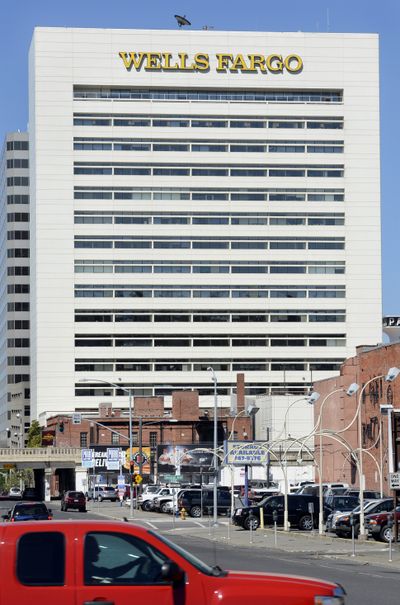Downtown buildings change hands

Two of Spokane’s well-known but cash-strapped buildings concluded foreclosure sales Friday, closing the file on separate cases of large commercial properties falling victim to a distressed real estate market.
The 17-story Wells Fargo Tower at 601 W. First Ave. and the six-level Holley Mason Building at 157 S. Howard St. both formally changed hands, culminating bank repossessions after the previous owners were unable to pay off loans.
Inland Northwest Health Services took over the remaining parts of the Wells Fargo building. It had acquired roughly one-fourth of the building in 2009 when previous owner Prium Spokane Buildings LLC sold that space for $9.4 million.
At Friday’s sale INHS officially took over the remainder of the 184,000-square-foot tower for roughly $16.1 million, said John Craig, INHS chief financial officer.
Prium bought the building from Spokane developer Walt Worthy for $25 million in 2006. The bank that ended up with the mortgage was Spokane-based Sterling Savings.
Prium Spokane Buildings, a division of Tacoma-based Prium Companies, filed for bankruptcy in late 2010. Prium did not respond to phone calls Friday seeking comment.
INHS is an independent medical services provider that runs St. Luke’s Rehabilitation Institute and other services. It was formed in 1994.
Craig said the INHS board has no plans to sell the Wells Fargo building or portions of it in the near future. INHS has been using the building since 2006 and is its largest tenant.
The second-largest tenant is Wells Fargo Bank, Craig said. He said Wells Fargo has a naming-rights provision, meaning there will be no change in the building’s name.
INHS hopes to find tenants for three unoccupied floors in the building, Craig said. Chris Bell of NAI Black brokered the deal for the Wells Fargo Tower.
Unlike the Wells Fargo sale, the Holley Mason transaction did not result from a bankruptcy.
Spokane developer Rob Brewster, who bought the Holley Mason in 1998 for roughly $475,000, said he decided to let the creditor, Prudential Financial, sell the building.
Brewster said diminishing revenue from Holley Mason tenants left him unable to meet loan payments.
The company that took over the note from Prudential is C3 Realty, which paid roughly $5.2 million for it.
C3 Realty, based in New York, is a national firm that acquires and resells distressed properties.
“Sadly, that’s the kind of market Spokane has right now,” Brewster said Friday. “If you started out buying any (commercial) property after 2000, you’re probably now under water” as the real estate market tanked, he said.
The 126,000-square-foot Holley Mason Building is valued at $6 million, according to the Spokane County assessor’s office.
Brewster said he didn’t file for bankruptcy because a default on the contract with Prudential would have opened the door to claims against his retired parents’ personal assets.
Attempts to reach C3 for comment were unsuccessful.
Brewster said one major tenant, call center manager West Corp., obtained a significant lease reduction after saying it might move elsewhere.
Another major tenant, Cricket Communications, reduced its leased office space there, slashing payments from $16,000 per month to $5,000, he said.
Brewster owns the downtown Montvale Hotel. He said the Montvale is holding its own financially.
Constructed in the early 1980s, the Wells Fargo Tower was originally called the Farm Credit Bank Building.
In 1998, Metropolitan Mortgage and Securities CEO Paul Sandifur bought the bank building for $11.7 million and used it as his company’s base of operations. The company stayed there until mounting debt and angry investors forced Metropolitan to file for bankruptcy in 2004.
A year later, Worthy bought the building and renamed it the Wells Fargo Tower after signing Wells Fargo as the anchor tenant.